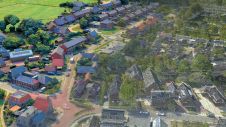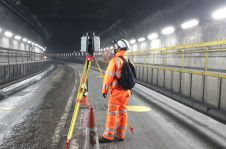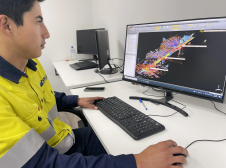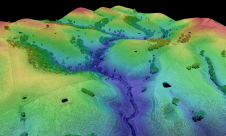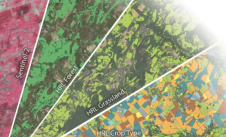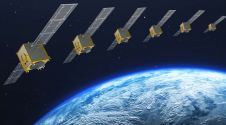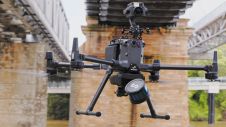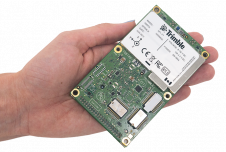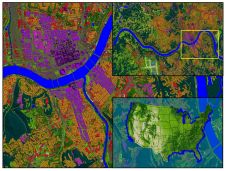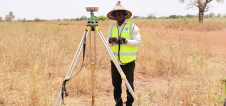扩大视野:2020及以后的地理空间预测
从纽约到迪拜再到缅甸,越来越多的聪明城市在全球范围内涌现。随着越来越多的国家开始转变,曾经仅属于科幻小说领域的未来派城市和最先进的小工具可能很快成为我们的现实……随着地理空间的发展,它们将成为可能行业。
到2025年,全球地理空间分析市场估计价值1,344.8亿美元,在2019年至2025年期间,该市场的复合年增长率为15%[1]. Asia Pacific is also expected to see the highest growth during that period, fuelled by numerous smart city initiatives such as ASEAN Smart Cities.
这些指标表明对地理空间服务的需求增加,毫无疑问,这也将为地理空间服务和技术带来改善。在诸如增加数字化,访问,无人驾驶汽车(UAV)使用的无处不在的因素和腰带和道路倡议的机会(BRI)等因素的带领下,预计地理空间行业将在2020年仍然是全球的关键参与者。
Increasing Digitalization
自从世界进入技术繁荣以来,我们一直在稳定地攀登以成为一个数字世界。地理空间技术将继续使我们能够通过将数字技术集成到工作流程中成为一种普遍的实践来建立智能城市。
例如,集成数字交付(IDD)的实施是新加坡政府建筑业转型地图中的关键要素之一。IDD将每个团队成员和利益相关者集成到工作流程中,从而提高每个成员之间的连接以提高效率和有效性。基于云的可视化和协作平台(例如HXDR来自Hexagon的HXDR)可以在记录下将数据发送到云。3D点云和建筑信息建模(BIM)也可以轻松地纳入IDD工作流程中。这样,参与项目的所有各方都可以访问实时数据,并将在任何新信息或更改的信息上进行更新。
这种方法强调了地理空间技术的数字化如何支持建筑行业,并且在确保城市规划和建筑工作流程有效地运作以及同时运作至关重要。

访问更多用户
While the geospatial industry has always had a strong footprint in the construction industry, it can expand its horizons far beyond its roots. Lidar technology is used in laser scanners and trackers to provide accurate 3D models and land-over classifications to map areas as large as cities. However, there is a lot of anticipation about how geospatial technologies can be incorporated into other businesses. For instance, the automobile industry is looking into how Lidar can be used as 'eyes' for autonomous vehicles. Authorities can similarly use Lidar for urban planning and disaster response.
Furthermore, geospatial services are increasingly moving online as Software-as-a-Service (SaaS), allowing users to access a software’s functions over the internet. Geospatial services such as SaaS essentially mean that these services will become accessible to even beginning users. Geospatial providers are likely to improve the intuitiveness and user-friendliness of their products to make them more accessible for prospective users.
UAVs
The global UAVs market is forecasted to grow toUS到2028年,406亿美元US$17.0 billion in 2018[2], and will play an increasingly important role in optimizing processes in various industries.
主要建筑公司188asia备用网址其他countries have begun to integrate UAVs into their work processes. The engineering community is one of the first industries to adopt UAV technology to aid virtual design and construction. Not only do UAVs improve the safety of work sites and are cost-saving compared to traditional surveying methods, but their aerial perspective also offers near-limitless ways to gather and analyse data. UAVs in geospatial technology have been used to scope out massive areas, such as a whole city, within a few hours. The integration of 3D visualization tools in UAVs will further revolutionize the way that geospatial technology can inspect, survey and map.

BRI的机会
自2015年以来,中国提议SG9000亿美元的BRI项目涵盖了相当于的机会SG$155 billion in the transport and building sectors. With over 200 projects spanning various continents[3], the precision and speed that geospatial services can provide are invaluable to such projects, and the ability to visualize the outcomes of projects is a great advantage for every party involved.
A notable BRI project is the Edirne to Kars High-Speed Rail Line in Turkey. The 2,000km line is the key link connecting the Guangdong and Shenzhen ports to Rotterdam, while also connecting the Asian markets of Myanmar, Bangladesh, India, Pakistan and Iran. A project of this scale will require rigorous and thorough planning to ensure that all these locations are linked, which may also present geographical problems. By using geospatial technology to map and survey locations, any construction challenges faced can be solved and even avoided well in advance.
Furthermore, critics have raised concerns regarding the BRI, such as the safety of sea channels and environmental concerns, as 90% of global commercial trade and 60% of the world’s total oil volume is still conducted through shipping[4]. It is important that these channels remain safe for use. With technology like Lidar, accurate maps can be plotted to ensure new trade routes will not obstruct existing ones. Lidar can also be used to ensure that no excessive damage is caused to the environment during construction.
Conclusion
As the various factors look set for continuous growth, opportunities for the geospatial industry are abound in many areas. In particular, smart cities – a market that will be worthUS$833 billion by 2030[5]– is in the driving seat to be the main growth engine for the industry as cities develop future infrastructure with geospatial technologies.
Please note that this article was written before the coronavirus outbreak.
[1]Bloomberg,到2025年,地理空间分析市场规模价值1344.8亿美元:Grand View Research,Inc.。
[2]GlobalData, Drones in Construction
[3]GlobalData, Progress on the “One Belt, One Road” - Update
[4]Liu Haiquan, The Security Challenges of the “One Belt, One Road” Initiative and China’s Choices
[5]GlobalData, Smart cities
Make your inbox more interesting.添加一些地理。
Keep abreast of news, developments and technological advancement in the geomatics industry.
免费注册



